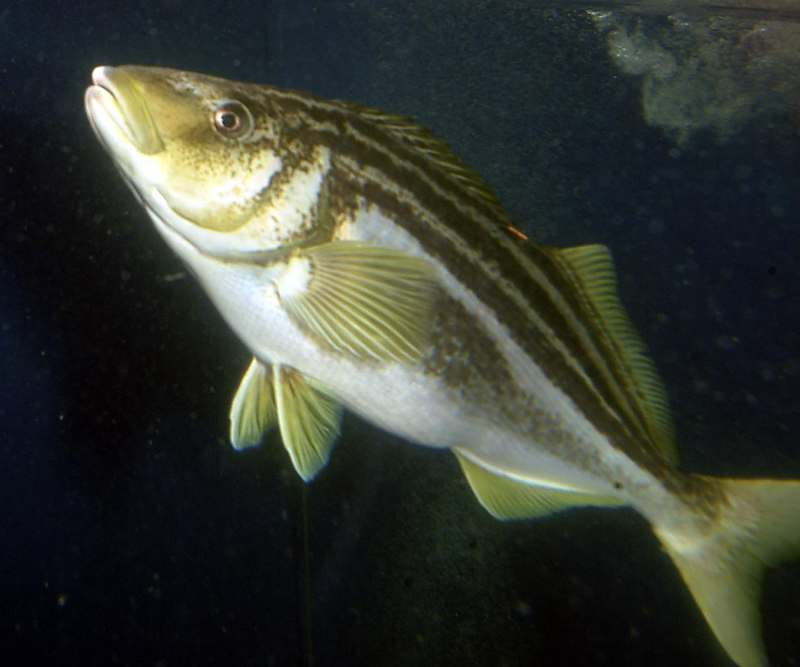Agriculture | Agricultural Aquatic Sciences | Aquaculture
Type of resources
Topics
Keywords
Contact for the resource
Provided by
Years
-
Mesozooplankton community composition and structure were examined throughout the D’Entrecasteaux Channel, Huon Estuary and North West Bay, Tasmania, from November 2004 to October 2005, the data represented by this record was collected on the 05/04/2005. The composition of the mesozooplankton community was typical of inshore, temperate marine habitats, with seasonally higher abundance in summer and autumn and lower numbers in winter and spring. Copepods were the largest contributors to total abundance across all seasons and stations, while cladocerans and appendicularians were proportionally abundant in spring and summer. The faecal pellets of these three main groups, along with those of krill and amphipods, also contributed significantly to material recovered from sediment traps. Meroplanktonic larvae of benthic animals showed short-term peaks in abundance and were often absent from the water column for long periods. Spatially, North West Bay and the Channel had a higher representation of typically marine species, including Calanus australis and Labidocera cervi, while truly estuarine species, such as the copepod Gladioferens pectinatus, were more important in the Huon Estuary.
-
Mesozooplankton community composition and structure were examined throughout the D’Entrecasteaux Channel, Huon Estuary and North West Bay, Tasmania, from November 2004 to October 2005, the data represented by this record was collected on the 13/10/2005. The composition of the mesozooplankton community was typical of inshore, temperate marine habitats, with seasonally higher abundance in summer and autumn and lower numbers in winter and spring. Copepods were the largest contributors to total abundance across all seasons and stations, while cladocerans and appendicularians were proportionally abundant in spring and summer. The faecal pellets of these three main groups, along with those of krill and amphipods, also contributed significantly to material recovered from sediment traps. Meroplanktonic larvae of benthic animals showed short-term peaks in abundance and were often absent from the water column for long periods. Spatially, North West Bay and the Channel had a higher representation of typically marine species, including Calanus australis and Labidocera cervi, while truly estuarine species, such as the copepod Gladioferens pectinatus, were more important in the Huon Estuary.
-

This data represents research conducted as part of a PhD project on Striped Trumpeter (Latris lineata). Recorded the prevalence of Kudoa neurophila (a myxozoan parasite formerly known as Pentacapsula neurophila) in relation to age for hatchery reared Striped Trumpeter using histology and PCR testing. Histology and in situ hybridisation techniques were incorporated into the study of the histopathology of the disease caused by this parasite to elucidate its entry point on the fish host and migratory pathway to terminal stage sporulation.
-
Mesozooplankton community composition and structure were examined throughout the D’Entrecasteaux Channel, Huon Estuary and North West Bay, Tasmania. The data represented by this record was collected as part of a grazing study conducted in Hideaway Bay, Huon Estuary (20-21 September, 2005). The grazing impacts of microzooplankton and mesoplankton on the phytoplankton communities were examined during several process studies. Experiments with mesozooplankton grazers were restricted to dominant omnivorous copepods (e.g. Acartia tranteri, Paracalanus indicus, Centropages australiensis) cladocerans and appendicularians. Grazing rates of microzooplankton reached as high as 96% of daily primary production, while that of mesozooplankton herbivours was never greater than 20%. Trophic interactions between the species are complicated by the recent arrival of the heterotrophic dinoflagellate Noctiluca scintillans to the region. This species grazes heavily on phytoplankton, smaller zooplankton and faecal pellets. Noctiluca scintillans accounted for up to 20% of mesozooplankton abundance in autumn and it is capable of both suppressing zooplankton abundance and reducing the sedimentation of faecal pellets to the seafloor.
-
Collected benthic community structure (species and abundance) and physical/chemical attributes (including sediment grain size, redox, sulphide and depth) for a large number of locations in the Huon and Derwent estuaries of south east Tasmania. Data was collected using van veen grab, divers where necessary or core samples. All locations include heavy metal data and site information. Most data was collected with spatial references (GPS).
-

Recorded details of visual field ontology (video images recording feeding response and histology of eye and jaw development), behaviour, feeding and jaw development and malformation in larval striped trumpeter (Latris lineata).
-

This data represents research conducted as part of a PhD project on Striped Trumpeter (Latris lineata). As the culture of striped trumpeter moves towards commercial scale grow-out, knowledge of the immune system as it relates to disease resistance and vaccination is becoming more important. This study began at the basic level of immunoglobulin (Ig) characterisation and then moved onto the creation of anti-serum, which was used as an immunological tool to investigate the onset of the antibody response in the striped trumpeter. Information recorded included, the characterisation and immune response of hatchery reared striped trumpeter.
-

This data represents research conducted as part of a PhD project on Striped Trumpeter (Latris lineata). Recorded optimal temperatures and lipid levels in diets, protein levels, growth and survival and body composition analysis for post larval striped trumpeter. Also investigated optimal weaning protocol and recorded post larval metamorphosis data.
-

This data represents research conducted as part of a PhD project on Striped Trumpeter (Latris lineata). Performed morphological histology of swim bladder development in Striped Trumpeter at various ages. Also recorded water temperature, photo period, intensity of light and buoyancy control (in relation to water salinity).
-

Data is primarily volume of eggs (naturally spawned and stripped) taken from different photo-thermal held brood stock groups of Striped Trumpeter (Latris lineata). Supporting data includes feeding, animal health and weight and environmental parameters (water quality).
 IMAS Metadata Catalogue
IMAS Metadata Catalogue